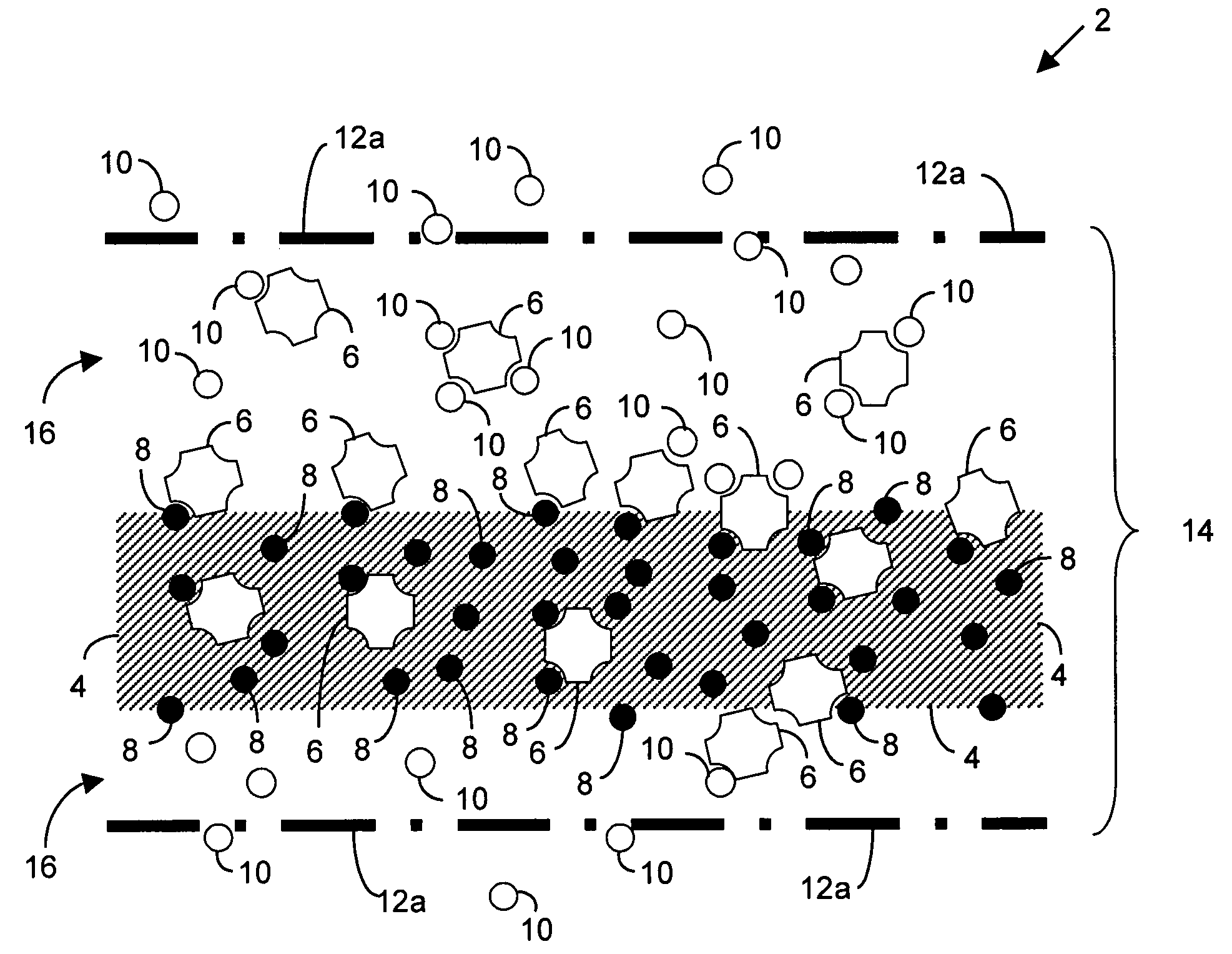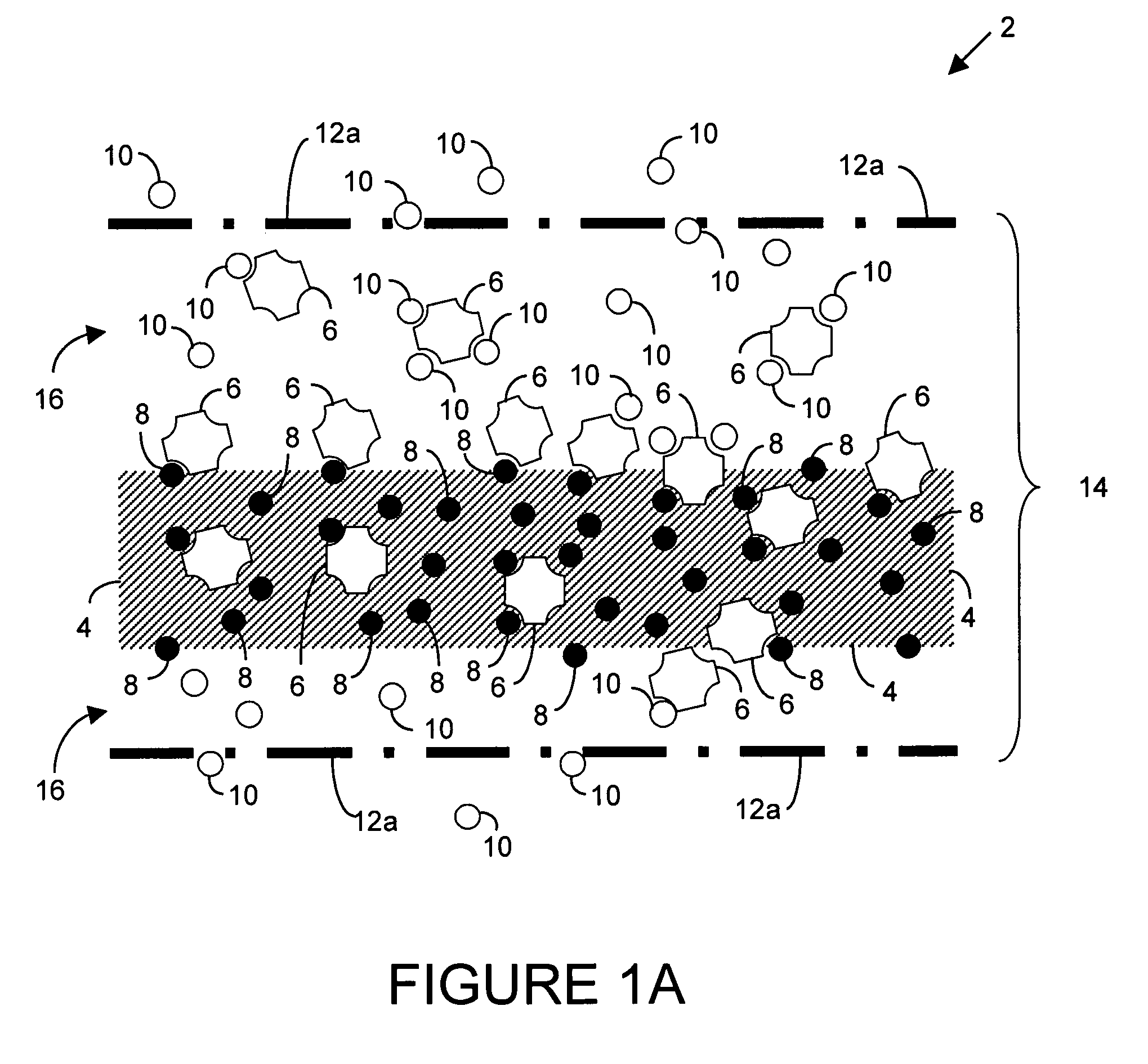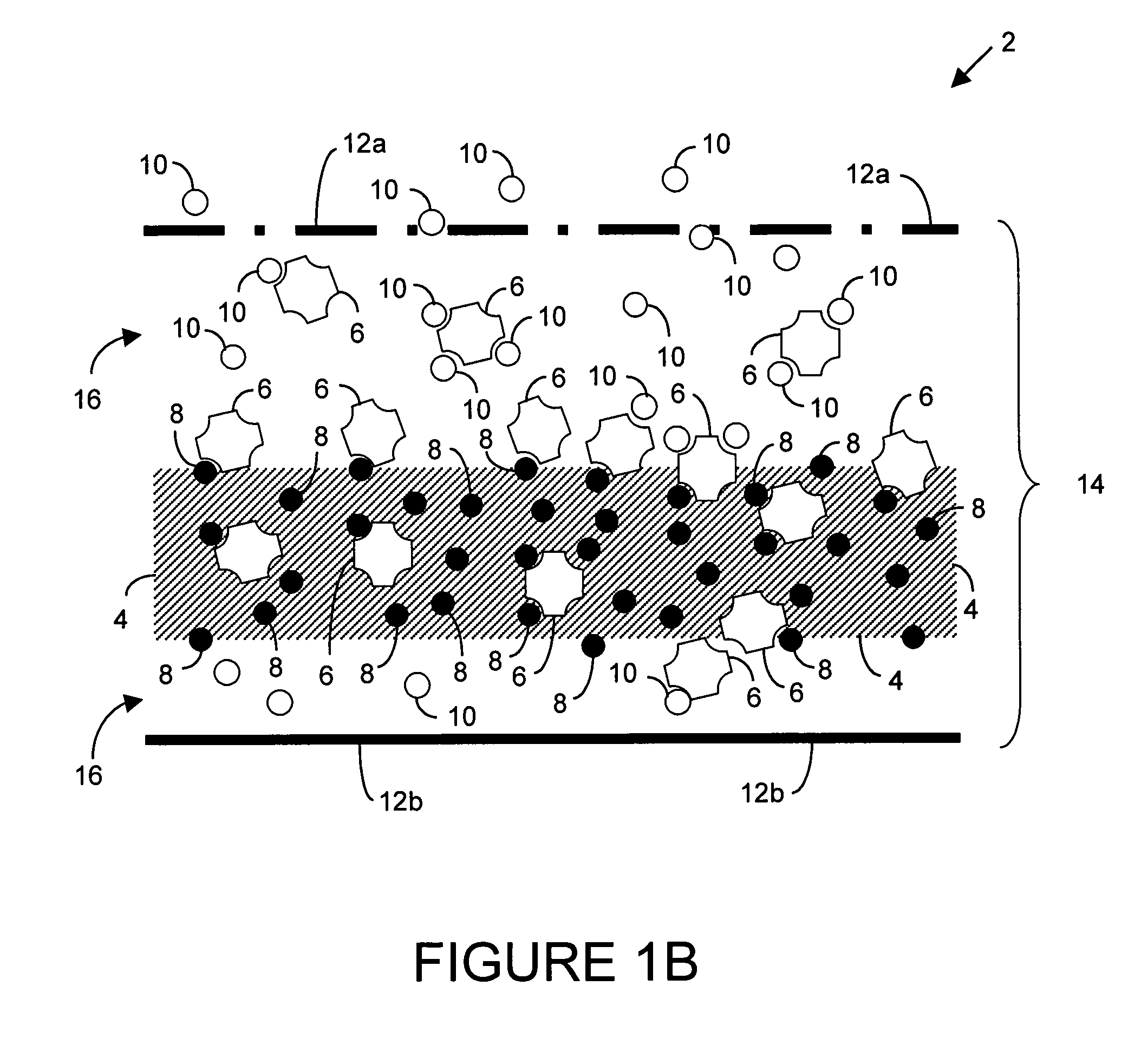System, device and method for determining the concentration of an analyte
a technology of analyte concentration and system, applied in the field of system, device and method for determining the concentration of analyte, can solve the problems of affecting the accuracy and stability of glucose measurement, and consuming time-consuming approaches
- Summary
- Abstract
- Description
- Claims
- Application Information
AI Technical Summary
Problems solved by technology
Method used
Image
Examples
example a
Measurement of Turbidity Change of ConA / Sephadex System at Various Glucose Concentrations
[0088]A swollen suspension of Sephadex G200 hydrogel beads (bead size 10 to 40 microns) was loaded with 20 mg / ml ConA. Then aliquots of the suspension were incubated with various glucose concentrations over a period of 30 min. Suspensions were then transferred into a 1 mm path length glass cuvette and the beads were allowed to settle. The turbidity of the suspension was measured at 750 nm in a spectrophotometer. FIG. 11 graphically illustrates the decrease in dispersion turbidity over the glucose range from 0 to 30 mM.
example b
Measurement of Turbidity of ConA-Sepharose / Dextran “Reverse” System at Various Glucose Concentrations
[0089]A swollen suspension of ConA-Sepharose hydrogel beads (bead size 60 to 135 microns) was loaded with 5 mg / ml Dextran 77,000. Thereafter aliquots of the suspension were incubated with various glucose concentrations over a period of 30 min. Suspensions were then transferred into a 1 mm path length glass cuvette and the beads were allowed to settle. The turbidity of the suspension was measured at 750 nm in a spectrophotometer. FIG. 12 graphically illustrates the decrease in dispersion turbidity over the glucose range from 0 to 30 mM.
example c
Reversibility of Turbidity Change in a Sensor Containing ConA / Sephadex System at Various Glucose Concentrations
[0090]A wet paste of 100 μl ConA / Sephadex G200 suspension (20 mg ConA per ml hydrogel) was sandwiched inside a rectangular semipermeable dialysis capsule between two membranes made of regenerated cellulose (cutoff 10,000 Da). The thickness of the membrane capsule was approximately 0.7 mm. The dialysis capsule was sealed with cyanoacrylate adhesive. The capsule was then fixed inside a 4 ml plastic cuvette that contained saline phosphate buffer without glucose.
[0091]The cuvette was placed inside the spectrophotometer in such a way that the light beam passed through the hydrogel. Then the solution was exchanged with 30 mM glucose and the turbidity change was dynamically monitored over time. FIG. 13 shows the turbidity response of the sensor after various exchanges of glucose concentration. The turbidity change was reproducible after repeatedly switching from 30 mM to 0 mM gluc...
PUM
| Property | Measurement | Unit |
|---|---|---|
| concentration | aaaaa | aaaaa |
| thickness | aaaaa | aaaaa |
| thickness | aaaaa | aaaaa |
Abstract
Description
Claims
Application Information
 Login to View More
Login to View More - R&D
- Intellectual Property
- Life Sciences
- Materials
- Tech Scout
- Unparalleled Data Quality
- Higher Quality Content
- 60% Fewer Hallucinations
Browse by: Latest US Patents, China's latest patents, Technical Efficacy Thesaurus, Application Domain, Technology Topic, Popular Technical Reports.
© 2025 PatSnap. All rights reserved.Legal|Privacy policy|Modern Slavery Act Transparency Statement|Sitemap|About US| Contact US: help@patsnap.com



